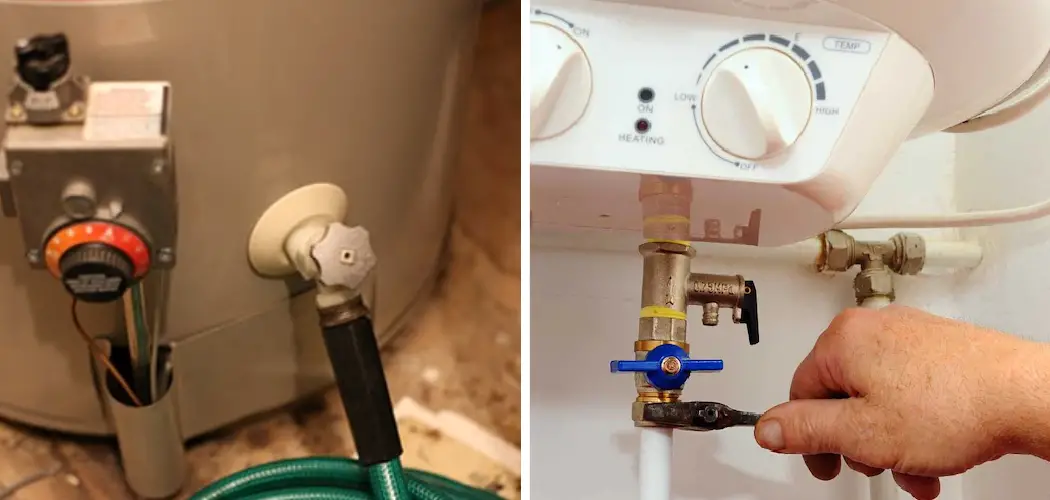Are you having trouble draining your water heater without a drain valve? This can be a tricky task, especially if you’re not well-versed in plumbing. But fear not! In this blog post, we’ll provide comprehensive instructions on how to properly and safely drain a water heater without the use of an external valve. We’ll cover all the necessary tools, supplies, and safety measures that need to be taken; as well as step-by-step instructions for completing the job. So let’s get started!
One of the most important parts of homeownership is having an understanding on how to properly maintain your home’s mechanical components. One such component that many people overlook but can be integral to keeping your water heater running for a long time is draining it. This might seem pretty straightforward – especially if you have a modern water heater model equipped with a drain valve – however, not all heaters come with this feature and so knowing how to do it effectively without one is essential.
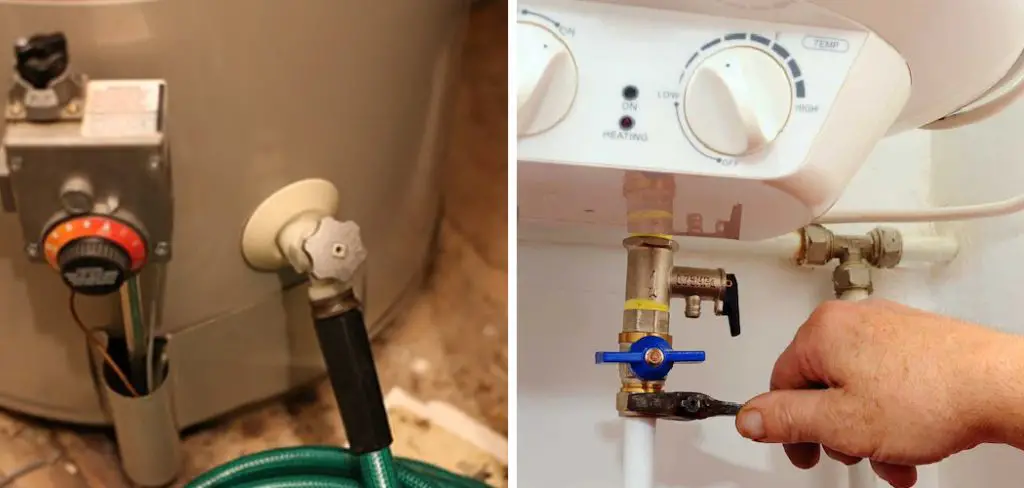
In this post, we will discuss the basics of how to drain a water heater without a drain valve and provide detailed instructions on how exactly it should be done safely.
Why May You Want to Drain a Water Heater Without a Drain Valve?
There are many reasons why you may want to drain a water heater without a drain valve. Such as:
1. To Flush Out the Sediment
One of the main reasons you may need to drain a water heater without a drain valve is to flush out the sediment that accumulates over time. This sediment can not only reduce the efficiency of your water heater but can also cause clogs and other issues.
2. To Replace an Inoperative Drain Valve
If you have an inoperative drain valve, draining a water heater without one can be the only option available. This is especially important if the valve is stuck open since this can cause significant damage to your home and its plumbing system.
3. To Relocate the Water Heater
If you are planning on moving your water heater from one place to another, draining it first will help ensure that all the water is out and there won’t be any potential leak or flooding issues when you try to transport it.
4. To Change the Existing Water Heater
If you are replacing your existing water heater, draining it without a drain valve is essential in order to make sure that no water remains inside before changing out the tank. Also, this will ensure that the new heater is properly filled with water and functioning correctly.
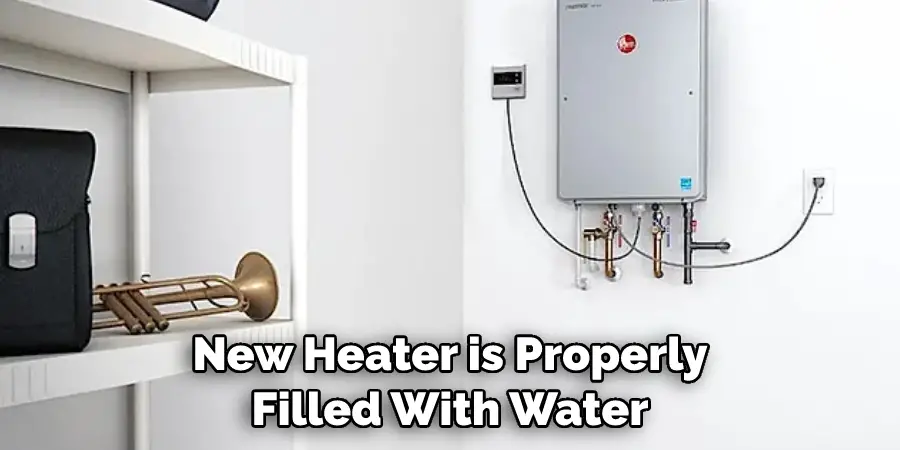
5. To Clean the Tank
If you are cleaning your water heater, draining it without a drain valve can help get rid of any built-up dirt, debris, and other foreign particles that may be present in the tank. This is especially important if you plan to use chemicals or other cleaning agents, as these could cause damage to the tank if left inside.
How to Drain a Water Heater Without a Drain Valve in 6 Easy Steps
Knowing How to Drain a Water Heater without a Drain Valve can therefore be extremely useful. Let’s take a look at how to do this.
Step 1: Locate the Cold Water Inlet and Hot Water Outlet Valves.
The very first step is to locate the cold water inlet valve (usually at the top of the tank) and hot water outlet valve (at the bottom). You will need to turn off both valves before beginning any other work. It will also help to relieve the pressure in the tank.
Step 2: Flush Out the Tank Water.
Using a garden hose, attach it to the cold water inlet valve and open it up until all of the water has been flushed out of the tank. This will flush out any sediment or particles that might have built up in your tank. Be careful not to let the pressure of the water damage any nearby fixtures or walls.
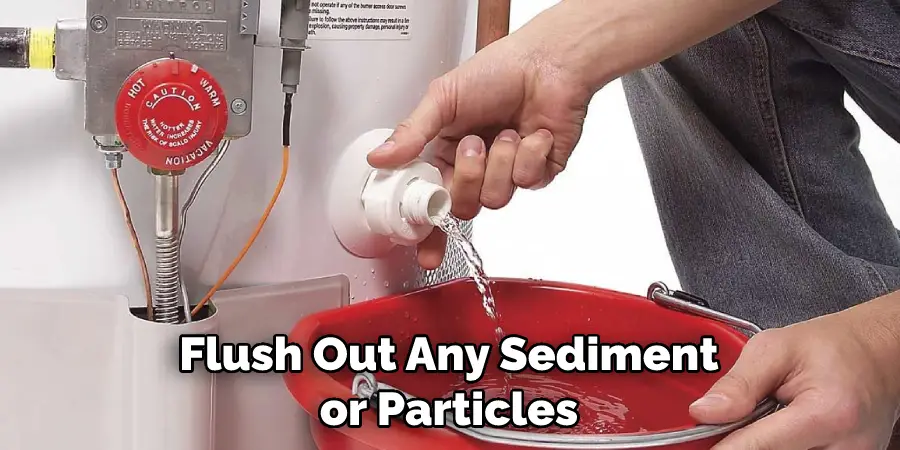
Step 3: Connect a Garden Hose to the Hot Water Outlet Valve.
Using another garden hose, attach it to the hot water outlet valve and start draining out all of the tank water. Make sure you are doing this in an area that will be easy to clean up afterward, such as outdoors or into a bucket.
Step 4: Empty the Water Heater Tank.
Once all of the water has been drained out, you can then move on to emptying the tank. To do this, use a sponge or cloth to absorb any remaining traces of water from inside the tank. Be sure not to leave any standing water in there, as it could cause damage later.
Step 5: Fill the Tank with Cold Water.
Once you have completely emptied the tank, it is time to fill it up with cold water again. This will help to cool down any remaining heat in the tank and get rid of any lingering sediment or particles. To do this, simply attach a garden hose to the cold water inlet valve and turn it on.
Step 6: Turn the Valves Back On.
The last step is to turn the valves back on and let your water heater start functioning again. Be sure to check for any leaks before turning them fully back on, as this could prevent further damage from occurring.
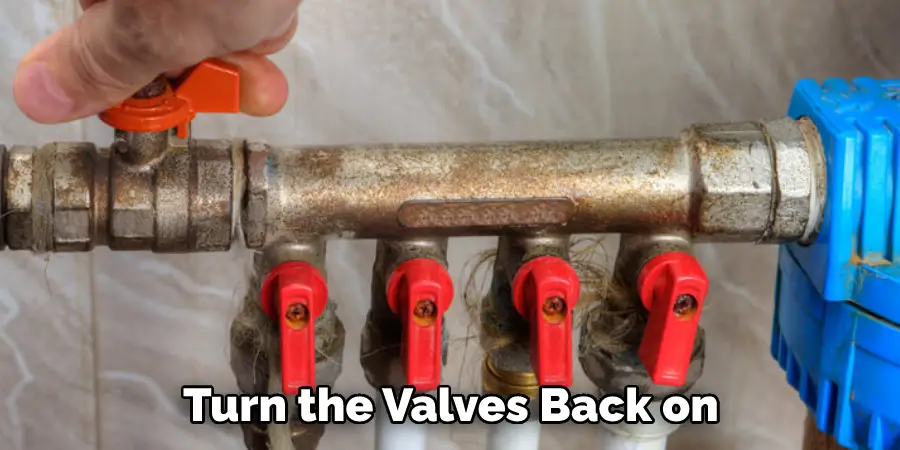
Now that you know How to Drain a Water Heater without a Drain Valve, it should be much easier to maintain your water heater. Make sure you take the necessary precautions and check for any potential issues before attempting any sort of maintenance or repair. Following these simple steps will help ensure that your water heater is running smoothly and safely again in no time!
Some Additional Tips to Drain a Water Heater Without a Drain Valve
1. Do Not Use a Siphon to Drain the Tank
This is very important because a siphon can introduce air into the tank and cause serious damage to the water heater. It will also contaminate the water in the tank and can introduce dangerous chemicals or bacteria.
2. Make Sure to Disconnect Any Electrical Wiring
It is important to make sure that any electrical wiring attached to the water heater is disconnected before attempting a drain without a drain valve. This will help prevent electric shock or other hazards.
3. Make Sure to Disconnect Any Gas Piping
Any gas piping connected to the water heater should be disconnected before attempting a drain without a drain valve. This will help ensure that no gas leaks occur and that there is no risk of fire or explosion.
4. Insert a Hose Into the Tank
To complete the drain without a valve, insert one end of a garden hose into the top of the water heater and run the other end to a safe location. This will allow the tank to be drained without causing any damage to the appliance or surrounding areas.
5. Open Up the Valve for Drainage
Once the hose is securely in place, open the drain valve on the water heater and allow the tank to completely empty. Once it is finished draining, close the valve and disconnect the hose before turning any electrical or gas connections back on.
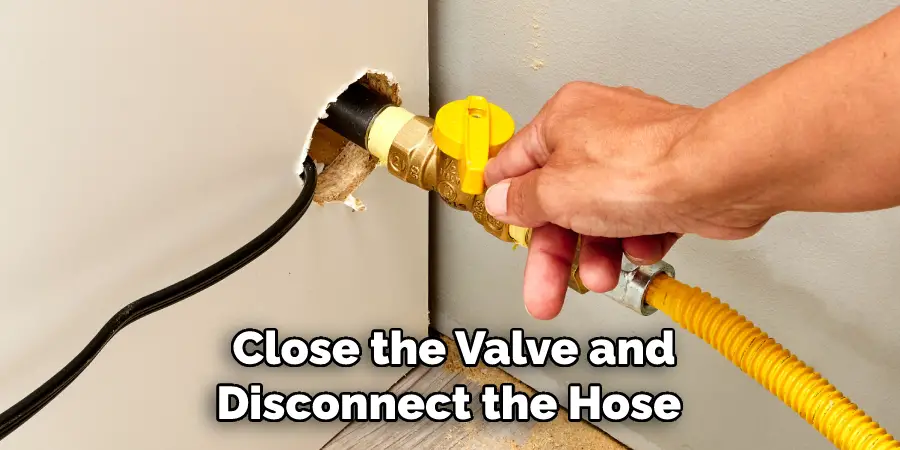
By following these tips, you should be able to successfully drain a water heater without a drain valve and avoid any damage or hazards during the process. With the right preparation and knowledge, this can be a relatively straightforward process. Be sure to always wear safety gear and follow all manufacturer instructions when working with your water heater to ensure you are doing it safely and correctly.
Frequently Asked Questions
What Precautions Should Be Taken When Draining a Water Heater Without a Drain Valve?
It is important to take certain precautions when draining a water heater without the use of a drain valve. When dealing with any kind of plumbing, it is always best to turn off the power source and ensure that all hot water taps are closed so that no scalding water can be released.
Additionally, it is recommended to wear protective gear such as gloves, safety glasses, and other clothing to protect your skin and eyes from splashes of hot or boiling water. Also, make sure that you have a container ready to catch the draining water as it will be very hot. Lastly, if the tank has an Anode Rod, it is recommended to disconnect it and float the rod at the top of the tank in order to reduce any chance of damage.
What Do I Need To Drain a Water Heater Without a Drain Valve?
In order to drain a water heater without a drain valve, you will need some basic tools such as wrenches, plumber’s tape, a hose, and a container to collect the draining water. Additionally, you will need to turn off the power source and ensure all hot water taps are closed as well.
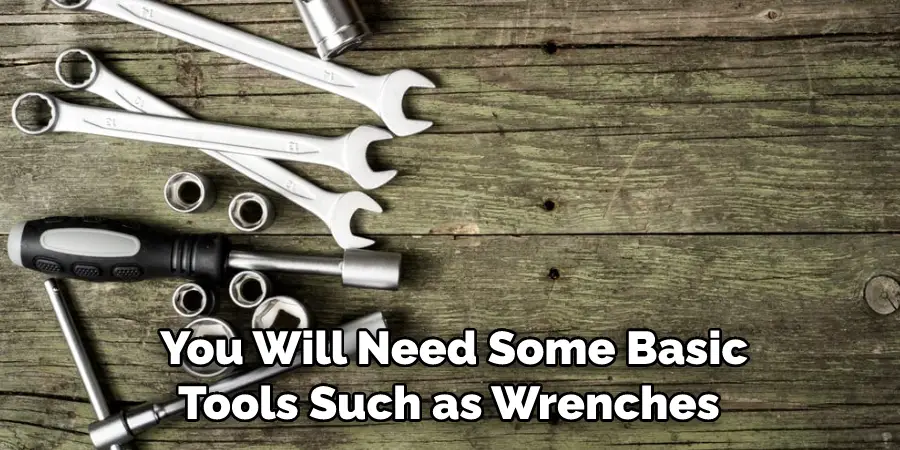
What is the Best Way To Drain a Water Heater Without a Drain Valve?
The best way to drain a water heater without a drain valve is to turn off the power source and ensure all hot water taps are closed. Then, disconnect the inlet and outlet pipes from the tank with a wrench, slowly unscrewing them so that no water is spilled. Connect a garden hose to one of the disconnected pipes and fit it securely with the plumber’s tape. Place your container under the hose and open the valve to allow the water to drain out.
Once the tank is empty, you should close off the valve and disconnect the hose. Finally, reconnect the inlet and outlet pipes securely and turn on your power source again.
Are There Any Tips For How to Drain a Water Heater Without a Drain Valve?
Yes, there are several tips for draining a water heater without a drain valve. Make sure to turn off the power source and ensure all hot water taps are closed before you begin. Wear protective clothing such as gloves, safety glasses, and other clothing to protect yourself from splashes of hot or boiling water. It is also important to have a container ready to collect the draining water as it can be very hot.
Additionally, if you have an Anode Rod in your tank, disconnect and float the rod at the top of the tank in order to reduce any chance of damage. Lastly, make sure to open and close valves slowly when draining a water heater without a drain valve. This will help to ensure a safe and thorough draining experience.
How Much Will Water be Drained When I Drain My Water Heater Without a Drain Valve?
The amount of water drained will depend on the size of your tank. It is recommended to have a container ready with enough capacity to accommodate the draining water from your water heater. Generally speaking, most tanks can hold anywhere from 20-80 gallons of water, so it is important to be prepared with a container of equal or greater capacity than the tank you are draining.
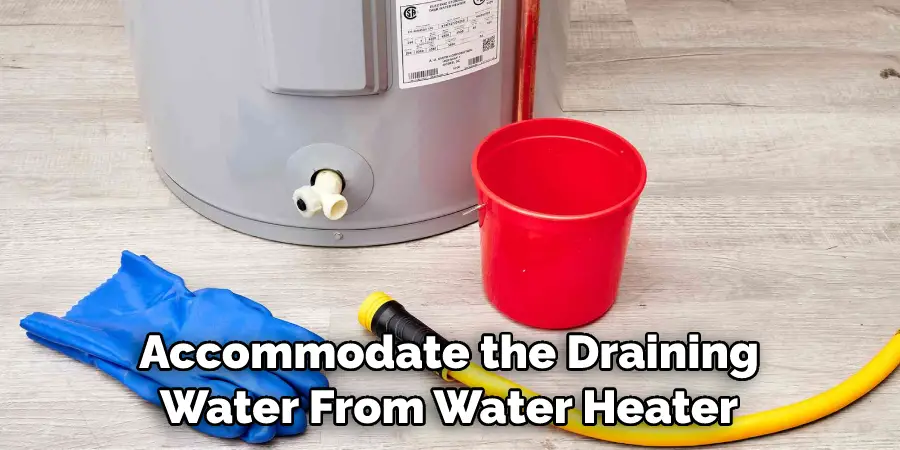
Conclusion
Now you know how to drain a water heater without a drain valve. How to drain a water heater is an important task for anyone who needs to maintain their hot water tank regularly. It’s not difficult, but it does require some preparation and care. First, you must ensure that the water supply has been shut off and that the power is disconnected from the unit.
Next, you will need to attach a garden hose to the tank’s pressure relief valve or use a siphon pump to remove the water. Finally, you will need to flush the system with fresh water and inspect the drain hose for any blockages. Following these steps will ensure that your water heater is in optimal condition and ready for use.
Remember – always exercise caution when dealing with hot water tanks, especially if you are unfamiliar with them. Be sure to follow the manufacturer’s instructions and wear protective equipment when working with hot liquids. With these tips, you can easily drain your hot water tank without a drain valve and keep it running in top condition!
You May Read Also Keep Your Drains Clean

